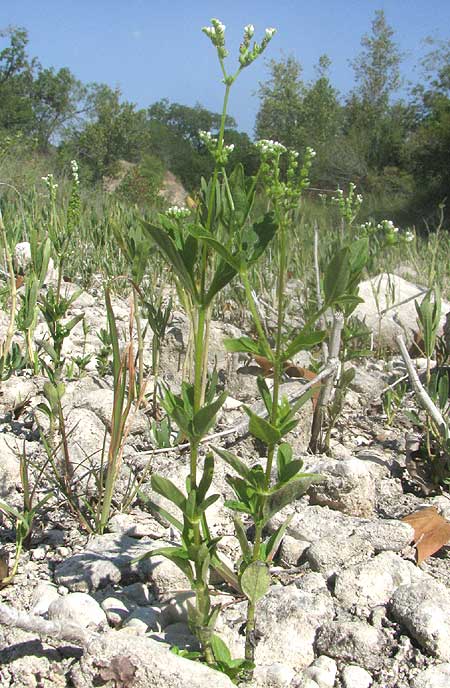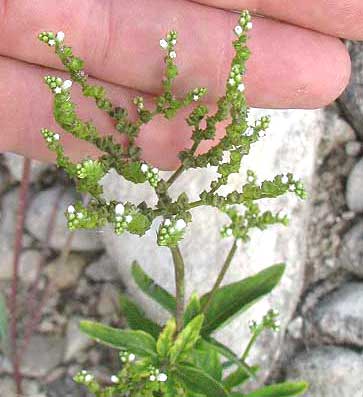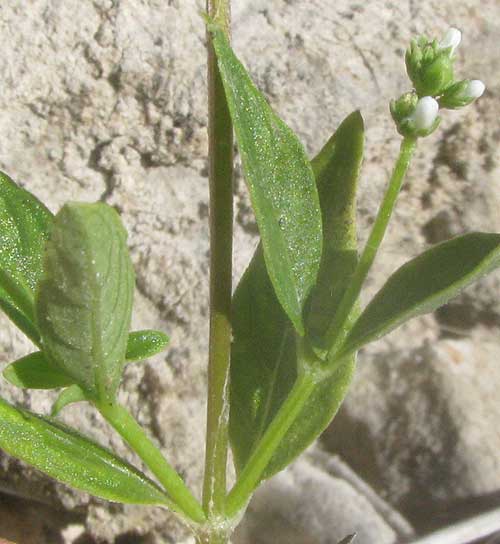Excerpts from Jim Conrad's
Naturalist Newsletter
from the September 1, 2013 Newsletter issued from the Frio Canyon Nature Education Center in the valley of the Dry Frio River in northern Uvalde County, southwestern Texas, on the southern border of the Edwards Plateau; elevation ~1750m (~5750 ft); N29.62°, W99.86°; USA
HORNPOD
On the little Dry Frio River's bed, during most of the year submerged below clear, running water, now in most places fields of gravel and cobblestones coated with white, dried-up marly mud create hot, very dry deserts. Sunlight bounces off the whiteness with real violence, yet a few wildflowers do survive there, including the foot-tall one shown below:

A different view shows that on robust plants the flowering heads can assume a curious configuration, shown below:

A closer shot showing how flowers and fruits arise on one side of the raceme is shown below:

At the bottom of that picture we also see the plant's unusual fruits. In the picture notice how the fruit is so deeply two lobed, a good field mark. The lowest fruit in the picture is sloughing off a withered corolla. At the picture's top, immature flowers and buds arise from a slightly curved tip. Such curved inflorescence tips with flowers growing on only one side are said to be "scorpioid," like a scorpion's curved tail, and only a few plant families produce them. Therefore, this is a good field mark, as are the deeply divided fruits.
You can see the plant's opposite leaves below:

These details lead us to the Lax Hornpod, MITREOLA PETIOLATA, of the Logania Family, the Loganiaceae, a smallish family found mostly in the tropics and subtropics. The hornpod part of its name refers to the two-pointed fruits. Lax Hornpod itself occurs throughout most of the American Tropics, preferring moist streambeds, seeps and the like.